| Umělec 2006/1 >> Nothing: An Interview with Kateřina Šedá | Просмотр всех номеров | ||||||||||||
|
|||||||||||||
Nothing: An Interview with Kateřina ŠedáUmělec 2006/101.01.2006 Markéta Uhlířová | interview | en cs |
|||||||||||||
|
Since becoming a student at the Academy of Fine Arts in Prague, the Czech Republic in 1999, Kateřina Šedá has staged public interventions into everyday life that she identifies as ”normality.” These experiments have taken place in small villages near Brno, her home environment, as well as in the urban setting of her second home Prague. Her past projects include The First Rally of Sunday Painters (Líšeň, near Brno, 2002), Quiet, Please: I’m Painting (Charles Bridge, Prague, 2003) and Bringing up a Child, 2004. For her latest project, Converter (Academy of Fine Arts, Prague, 2005) Šedá invited a ”gray jury” composed from 8 members of her Šedá family (The name, Šeda, is also the Czech word for the color gray) to comment on and join in discussions about the art work submitted by graduating students. Šedá has participated in numerous group exhibitions. She is holder of the Tranzit Award (2004), Essl Award (2005) and most recently of the prestigious Jindřich Chalupecký Award.
For her Nic tam není (There is Nothing There) project, which took place on Saturday May 24, 2003, Katerina Seda asked the inhabitants of the South-Moravian village Ponětovice to synchronise their daily routine so they all did exactly the same things at exactly the same time. The action drew on the artist’s research into the everyday life of the locals , and its aim was to make people do things together and to show them – and the world – the village normality as a positive quality. This interview is a result of an email conversation between artist Kateřina Šedá and curator Markéta Uhlířová who worked together on The One exhibition, organized by Trong Nguyen at the NGC 224 Gallery in New York (October - November, 2005). You now divide your time between Prague and Líšen where you grew up. Do you feel a stronger affinity to either place? Where are you at home? That’s a difficult question. I am attracted to Líšen because I was born there and my family lives there. On the other hand, someone I love very much lives in the Prague apartment. But to be honest, Líšeň wins. My roots are there and I owe a lot to that place. I am haunted by the thought that the place gave birth to me, and I have to take care of it now. It’s not that I can’t work in Prague, it’s that I feel pulled away from there. I should say Líšeň is no longer a romantic, picturesque village as it was in 1900; it is a suburb of Brno. Also, the housing estates in Nová Líšeň, the new town, clearly indicate it’s an urban district. Stará Líšeň, the older town, was destroyed by several developments: the housing estates, a wide street that breaks through the ”town” (Charles IV Square, the center of Old Líšeň), a shopping center (today called Charlie Center), that was built where a pond used to be, and tram rails that wind through the city towards the historical center of Líšeň. At first glance, these are all indications of an urban environment , but people who live in Stará Líšeň know all too well that small town rules reign. At the same time, these are disrupted by Nová Líšeň, where urban principles dominate. That blend may be why I find the place so attractive-I just can’t get a handle on it. Prague and Líšeň are connected by a few hours’ bus trip. What changes for you as you move between the places? Everything shifts, including my mood. In Prague I often feel uneasy and when I get out in the country, I feel like I can go anywhere—suddenly free, and that all the vast expanse of land is made only for me. For most people villages are places where they have nothing to do (it was double meaning)... I sympathize. It isn’t easy to enjoy the surrounding countryside when all the buses have been cancelled and when there is with no job and no pub to go to. But there are villages close to cities where you have all these things, and yet they feel equally desolate . Maybe it is the worst case to have all the attractions within arm’s reach-with the city nearby there are fewer reasons to have any public events. These are the places people from cities move to, as here they can still be close to work but at the same time live in the country. They expect to escape the city and wind down here and couldn’t care less about participating in any community events. These are the people who are destroying one of the most important aspects of village life – living together. In other words, the natural forums for the exchange of opinions—like the village pubs—fade away, because there cease to be the need or the reasons to go there... But this makes dialog as a public matter an impossibility. Sure, although I think that some village residents do feel this need, they just don’t know where to go when there is no pub in their village. And what about those who don’t want to go to the pub like mothers with children or elderly women, particularly widows? But it’s not just the pub, it’s the actual need for people to get together that is disappearing. In the past it used to be a major social event to build a house in the village. One neighbor would do the water piping, another would do the electricity and another would help with the roof. And when someone else built a house, people helped them. Nowadays, houses are built by companies, and nobody cares. Or women used to gather together to pluck feathers. Here we have come across one of the crucial points of my projects for villages – I am trying to find some new activities that could bring people together in a natural way, like it used to be. In your There is Nothing There project you enabled people to meet, although the reason for the meeting was actually the meeting itself - getting together and doing something together. That must have been an important experience, but it would be difficult to sustain. Are there any public matters that are worth getting together for, face-to-face? Such a public event is itself the life in a village or a city. It is only a detail whether we deal with regional elections or playground benches. It is vital that people have the need to meet and to feel their voice and opinions are listened to. Apart from migration as an escape and the hunt for peace and quiet that you already mentioned, what other reasons are there for the fragmentization of village communities? I wouldn’t generalize. There is a variety of communities and there are hundreds of reasons. If I focus on Czech villages only, skipping over the usual sociological analysis, an important reason is the underrated role of the town mayor. His office hours tend to be limited to a few hours two days a week, needless to say it is just ”extra” work on top of his main job. So all he can manage to do is to give an approval or sign some document, that’s all. I have always imagined that the mayor should do what I am trying to do – to lead the village towards a community in any way possible. In Prevadec (Converter), your graduation piece at the Academy, you addressed a different kind of a decline in communication – that between the world of art and society as a whole. You showed a well-known, albeit awful, truth that a misunderstanding between an artist and what you call the normal viewer, is widely accepted – a problem no one seems to want to deal with. But I don’t really want to deal with it either; there may very well be no solution. I’m just trying to get rid of the barrier that separates the two sides. In many cases I don’t even think I could explain a work to a viewer but I want to bring it to them and to find a way of grabbing their attention to keep them at it for some time. Sometimes, it takes just a single word, an explanatory key perhaps, and if that’s missing, the viewer immediately leaves. In my graduation piece I found out that my family isn’t really interested in works of art but when a student says something about it, they get very keen and start talking about it, even willing to change their initial opinion completely. During my studies at the Academy I wished that there had been such a seminar. Questions and opinions from people outside the art world are a big test for us, and the most simple and comfortable thing is for us to say that they don’t understand us. Returning to the topic of the village, do you now look at it from the perspective of an outsider (from the city) or an insider? I think I am somewhere in the middle. I’ve lost the village perspective because when I left for my studies in Prague, I acquired a distance that allows me to drop back into the village and to do something there. I couldn’t previously walk through Líšeň in my tracksuit bottoms, I would have been wondering what they would say, who would gossip about it. In the city one becomes anonymous, and stops caring about these things. And at the same time, my perspective is not urban either, I understand people in the village, and it draws me there. In your “game” There is Nothing There you made a subject of the ”nothing” you heard about from people standing in a line (In Ponětovice there is nothing there!). The nothing was an idea you went to look at in Ponětovice. How did this nothing materialize? What form did it have? Even though I say that I seek to see the ”invisible” in my projects, I still try to maintain the perspective of normal people. At the start, Nothing in Ponětovice took on the same form for me as for them – there is no school, no post office, no doctor’s office... Only later I came to recognize this nothing as a symbol of normality. By synchronizing the activities of people in the village of Ponětovice, you actually made a big thing of this nothing that is (or isn’t) there. In fact, the multiplication of individual activities was actually a celebration of normality. I wanted them to see that even normal activities can be attractive, if they are done together. I want to stress that I am not showing people that there is nothing or that everyone lives the same life here, I am trying to say, look, there is another big quality, we know each other, we can help each other do things together... I have a feeling that you understand this nothing with a negative air, like people from big cities. As a claim, ”there is nothing there” is for me personally more of a poetic statement than a lament, let alone contempt. What I like in your project is that a certain naivety or purity, with which you approached the project, turned out to be an incredibly valuable thing. But how far were the local people part of the whole discussion? What did they get out of it? What were their reactions? As for the inhabitants and their awareness of the project, that was a extremely difficult thing. I visited them and tried to explain to them that the project was about seeing the invisible – the normality. That didn’t work of course... Then I said that it was about doing something together. That didn’t work either – they said they already had autumn feasts, that I could come there. Then I added that they had never experienced anything like this – they answered that they had had their fair share of organized teamwork in the past. Then I came up with making a film – to make a video about it- and they told me to get some actors. Then I said that everyone would hear about the village that got together like this – they were not interested. And in the end all this somehow came together, and they finally said yes. All of them were part of the discussion and each of them did it for a different reason, one of the most important of which was me and my efforts. During the ”sitting in the pub” discipline we made a short documentary about their reactions. I asked them 1. Why did you do it? 2. Was this Saturday different than the others? 3. Did you feel you were doing something strange? The answers varied. Some felt nothing special was happening because they were doing the same as usual. Someone said that now there was a higher culture. Another claimed that something fun finally happened in Ponětovice and that they would never meet like that on a Saturday. The most important outcome for me was that most of the people from Ponětovice said that something was going on, and it was just that they did it together. How did the elderly and children join in? Strangely enough, older citizens and children formed the majority. . Some children took part in all the disciplines, especially cycling. This discipline attracted mothers with small children on tricycles, some kids had scooters, so it was a sort of riding discipline. Children were also the ones who most debated why everyone had to eat tomato sauce for lunch. And they were also fascinated by the presence of the camera, they wanted to show off... When we were sitting in the pub, they arranged to play soccer as an extra discipline. Retired people were actually the starting element of the action. At the final meeting they asked all the others to join in . They are the ones to get up first, so a lot of them went shopping, many of them also did the sweeping and came to the sitting in the pub. While watching the video document I realized that it is one thing to imagine all of this as an idea and quite another to see it... Everyone expects to see three hundred people sweeping in the street and that’s what I wanted to avoid.. I didn’t want to show a mass of people shopping, I preferred to show some other, unexpected moment. During the action I realized that it was the moment of the beginning of the activities when people didn’t quite know if they should go out of the house, and so they looked around the street and then returned home for brooms while others joined confidently in the sweeping row. I was fascinated by this trigger element: ten people sweeping is not so impressive and it is predictable. And besides, some things are impossible to film, for example the opening of the windows was impossible to see as there were trees and gardens in front of the houses. I am convinced that the documentary has a weird effect – there is something unusual going on, yet it looks perfectly normal. Your video also includes short footage of the so-called “Bermuda triangle” of Ponětovice – Kobylnice – Prace. It oozes emptiness and peace, but also an apocalyptical heaviness. As if everyone was hiding in an underground bunker. That’s possible, but at the same time you can say that they are all at home playing the game of There is nothing there. Do you see the game as a kind of manipulation? I am reluctant to use the word “manipulation.” I didn’t manipulate anyone. I discussed it with the sociologist Bohuslav Blažek and other people. If I had wanted to manipulate, I wouldn’t have bothered so much with the questionnaires. I would have made up the routine of the day and I tried to get them to do it. When you invite someone to play a game with you, you don’t manipulate them. I never promised any profit, I never forced anyone and never tried to take advantage of anyone. I spent a few months explaining and enlightening them as to why it is worth trying such an experience. I didn’t promise them castles in the air. I brought them round to it... Well, those who took part in it say the same. But manipulation doesn’t necessarily imply forcing and taking advantage of someone, it is also any given structure that can direct, control or mould something. I think that every game is a form of manipulation of those involved, one that brings with it certain ideological problems (e.g. winner/loser, stronger/ weaker, and most of all the act of following the rules). The fact that it’s a voluntary manipulation is another matter. Watching TV, a soccer match, a wedding, and what happens in the doctor’s office are also forms of manipulation, even though we mostly choose to do them. I might be oversensitive to that word. When it has been used in describing my projects, it has usually been in a negative sense. Some see working with people as very simple. I often hear how I put too much effort into something that might be done more easily. But I wonder how, when no one trusts anyone anymore. It is important to me that the whole project is understood in a positive way, not as an example of the terror of mechanized activities, but as a picture of something collective. I agree with you. On the other hand, you stressed a certain mechanization (the invisible one, the everyday habit, that nothing), and therefore disrupted it. Yes, I stressed the normality by essentially disturbing it. That happened in the bigger framework ; the individuals did what they always do, only at slightly different times. For me it was the cleverest way to see normality. You disturb the routines and the ”normality” of the environment where you stage your interventions , be it in a city or village. In other words, you react to a certain surrounding and to its routine. The outputs can then be seen in galleries. What kind of space is a gallery for you? Where is the ”right place” for your art? Until recently I had been saying that I was not exhibiting at all, but that’s no longer true. Let me just say that I don’t like exhibiting and here are some of the reasons for it: My projects, as you said, react to a certain environment and it is there that they are the strongest. I keep saying that they each have a limited amount of viewers and these are the participants of the actions themselves. I very strongly feel (no matter how hard I try to resist it) that the gallery causes the spontaneity to disappear: it is an artificial space. Any of my actions would be much better off displayed in the living room at home. Most of my interventions take a long time to prepare, sometimes a whole year. I spend a lot of time explaining things to people, for them to understand that participating in an action has a meaning. And then the same thing sits in a gallery, alone, deserted, without me. I get haunted by this feeling that I have a duty to stand next to it, like a shop assistant, and that I should continue doing for the viewers what I did before the action, which is to try to explain it to people. But in the end I tend not to even go to the opening and I try to avoid the place altogether. I have never wanted to exhibit in galleries; my dreams are elsewhere. I get much more excited by the thought that a myth may be created in this or that place and that my action will become a tradition that people will want to repeat. When I think about the ideal presentation of my pieces, I can think of two possibilities. One of them is to tell stories during which I might, say, pull out a bag made of salami skins as a form of evidence. The other is to direct my efforts towards their natural environment, i.e. to disseminate the game There is Nothing There in other villages, to show my grandmother’s drawings to her friends or in an old people’s home. So why do I exhibit then? It is because I realized that some of my things can give people guidelines, and because people from the city will hardly go into a village to have a look at something like this... This interview was conducted in several parts; our e-mail conversation started in September. It is certainly the most stretched-out interview I have ever done. Talking of which, now, after winning the Chalupecký Award, you have given a lot of interviews. What do interviews with journalists mean to you? Do you understand them as a part of your work as an artist? The dialog with journalists makes me rethink my work, in a different light. But to be honest, when I hear the same questions again and again, I think to myself – go and do something else!
01.01.2006
Рекомендуемые статьи
|
|||||||||||||
|
04.02.2020 10:17
Letošní 50. ročník Art Basel přilákal celkem 93 000 návštěvníků a sběratelů z 80 zemí světa. 290 prémiových galerií představilo umělecká díla od počátku 20. století až po současnost. Hlavní sektor přehlídky, tradičně v prvním patře výstavního prostoru, představil 232 předních galerií z celého světa nabízející umění nejvyšší kvality. Veletrh ukázal vzestupný trend prodeje prostřednictvím galerií jak soukromým sbírkám, tak i institucím. Kromě hlavního veletrhu stály za návštěvu i ty přidružené: Volta, Liste a Photo Basel, k tomu doprovodné programy a výstavy v místních institucích, které kvalitou daleko přesahují hranice města tj. Kunsthalle Basel, Kunstmuseum, Tinguely muzeum nebo Fondation Beyeler.
|






























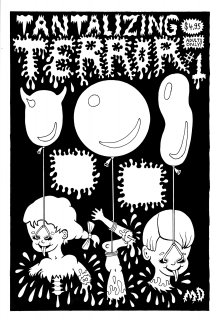




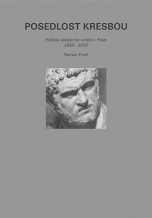
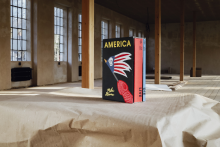
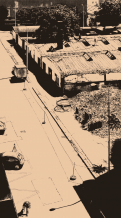
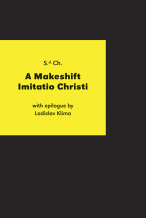


 We Are Rising National Gallery For You! Go to Kyjov by Krásná Lípa no.37.
We Are Rising National Gallery For You! Go to Kyjov by Krásná Lípa no.37.
Комментарии
Статья не была прокомментированаДобавить новый комментарий